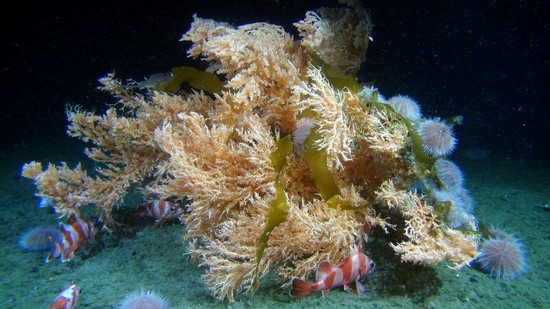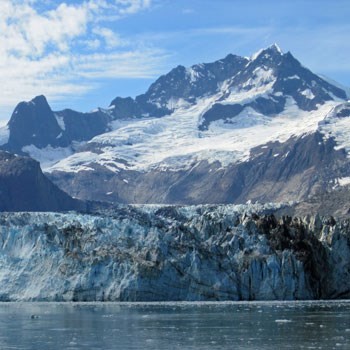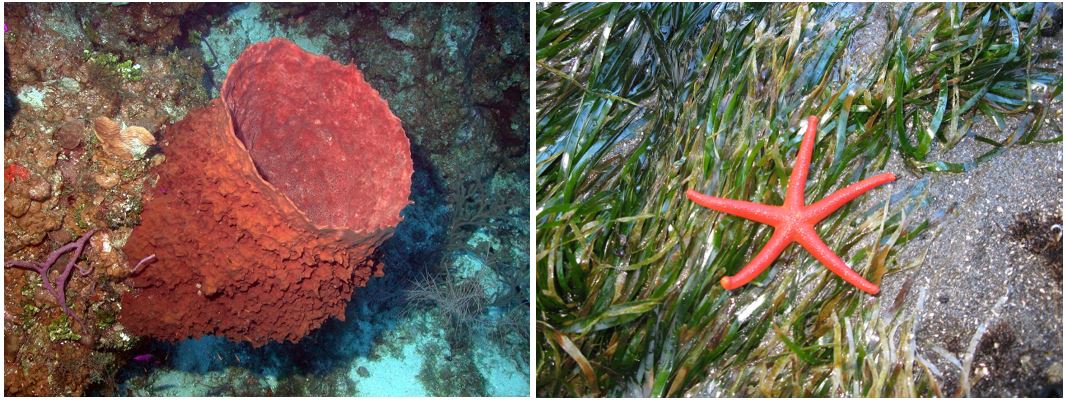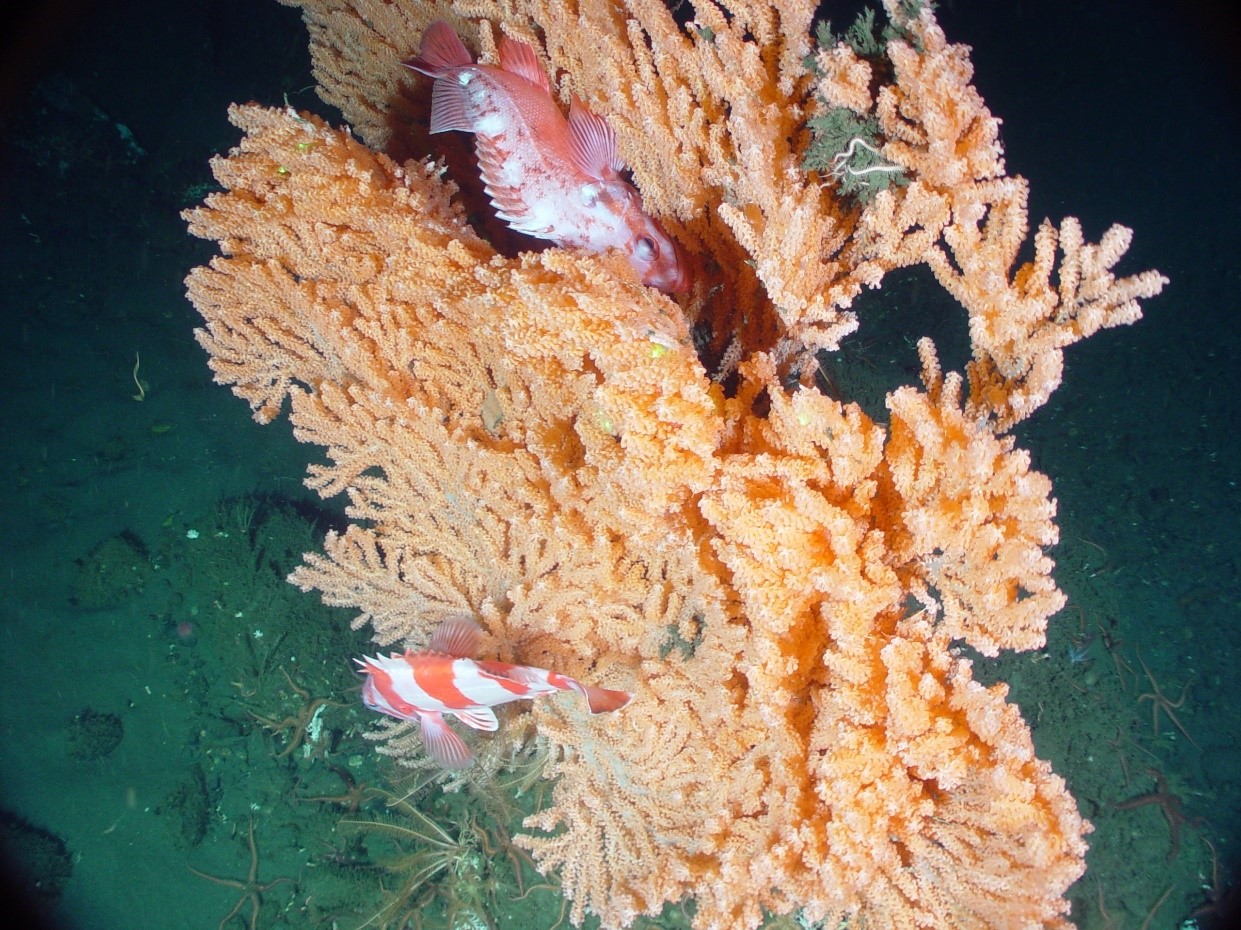Reference: Hartill, É.C., Waller, R.G., Auster, P.J. 2020. Deep coral habitats of Glacier Bay National Park and Preserve, Alaska. PLoS ONE 15(8): e0236945. DOI: https://doi.org/10.1371/journal.pone.0236945

Wait, coral can live in deep water?
Coral reefs provide a place to live, feed and seek shelter for many marine organisms including fish, crabs, and sea stars. Coral are made up of a symbiosis between two living organisms, the animal that forms the rigid coral structure made of calcium carbonate, and the phytoplankton that gives food to the coral host through photosynthesis.
Because Coral Reefs rely on food from these phytoplankton symbionts, many corals reside in the sunlit shallow water of the ocean. However, research has recently highlighted the importance of deep-sea corals across oceans that live in waters from 150-10,000 feet below sea-level, far beyond the reaches of sunlight.
You might wonder how coral living at this depth might find food. Instead of relying on phytoplankton, deep-sea coral feed on tiny, microscopic organisms that are present in water flowing by the coral structures. Just as shallow water coral reefs are vital for many marine organisms, deep-sea coral act as structures for many deep-sea organisms.
Why Glacier Bay National Park and Preserve?
Deep-sea coral resides in very deep ocean waters and are difficult to study. To get around this, researchers can find shallow water habitats that closely resemble deep-sea waters. Some of the characteristics of deep-sea waters include waters with little-to-no sunlight and cold water temperatures high in nutrients. One such environment are the waters off of Alaska in Glacier Bay National Park and Preserve (GBNPP).
Glacier Bay, as the name suggests, is surrounded by glaciers. These glaciers have a big impact on the species living in the bay. As glaciers melt, less dense fresh water runs into the bay and creates a layer above the saltier denser water below. Glacier melt also results in organic materials, such as small dead plant material, from glaciers running into the bay. Because of the freshwater layer, these organic materials remain in the surface layer and absorb light, preventing sunlight from reaching depths. These conditions result in an environment of low light, similar to deep ocean habitats.

Below the freshwater layer in Glacier Bay, the saltier water at depths is at temperatures consistent with deep-sea waters. Glacier Bay also has a deep current that runs through the waters of the bay, bringing high nutrient waters to the area.
Glacier Bay National Park and preserve is an ecosystem very similar to that of the deep ocean. In fact one well known deep-sea coral, Primnoa pacifica, has been spotted in the waters of Glacier Bay. Researchers set to find out exactly what kind of environmental factors these deep-sea corals need to survive by using the Glacier Bay ecosystem. Hartill and his team aimed to establish how climate change might affect other ecosystems by comparing glacier melt ecosystems in Glacier Bay with those in the deep-sea.
How to Study Deep-water Coral in Shallow waters
Finding out what is happening in deep waters is not easy; one way researchers get around this is by using remotely operated vehicles (ROVs). ROVs allow researchers to collect measurements at depth, while sitting aboard a ship at the surface. For this study, researchers used a camera attached to the ROV and a tool known as a CTD to get measurements of temperature and salinity.
The researchers used the attached camera to make measurements of the number of species present and the percentage of an organism within a 1 m2 area, or percent cover. Percent cover was used to determine how temperature, salinity and distance to the mouth of the inlet influenced where organisms could live.

Researchers found the highest number of organisms at the mouth of the inlet to the Bay, farthest from the glaciers. The communities present here included Primnoa pacifica (Red Tree Coral), sponges, cnidarians, echinoderms, mollusks and arthropods. Researchers found dominant species changed from the head of the inlet to the mouth and hypothesize that this is related to nutrient levels, dispersal of coral during spawning and competition between organisms. Although this research is exploratory, it is the first to report on cold-water benthic communities in Glacier Bay National Park and Preserve, Alaska.
Now What?

The head of the inlet in Glacier Bay was most affected by glacial melt and also had the lowest number of species. Glacier melt is predicted to increase with global warming and might have similar consequences globally. Therefore, studies like this are important to determine what ecosystems look like currently, and how they could change in the future. Global warming impacts in cold-water and deep-sea coral habitats will affect conservation efforts and economically important fisheries that rely on these structures for survival.
I’m a PhD student in the Rynearson Lab at the University of Rhode Island (URI) Graduate School of Oceanography (GSO). My research interests are focused on human impacts on the oceanic ecosystem, particularly effects on the primary producers (phytoplankton) at the base of the food web. Currently, I work with cultures from regions of the ocean that are nutrient limited and will conduct experiments to investigate how these phytoplankton survive.
